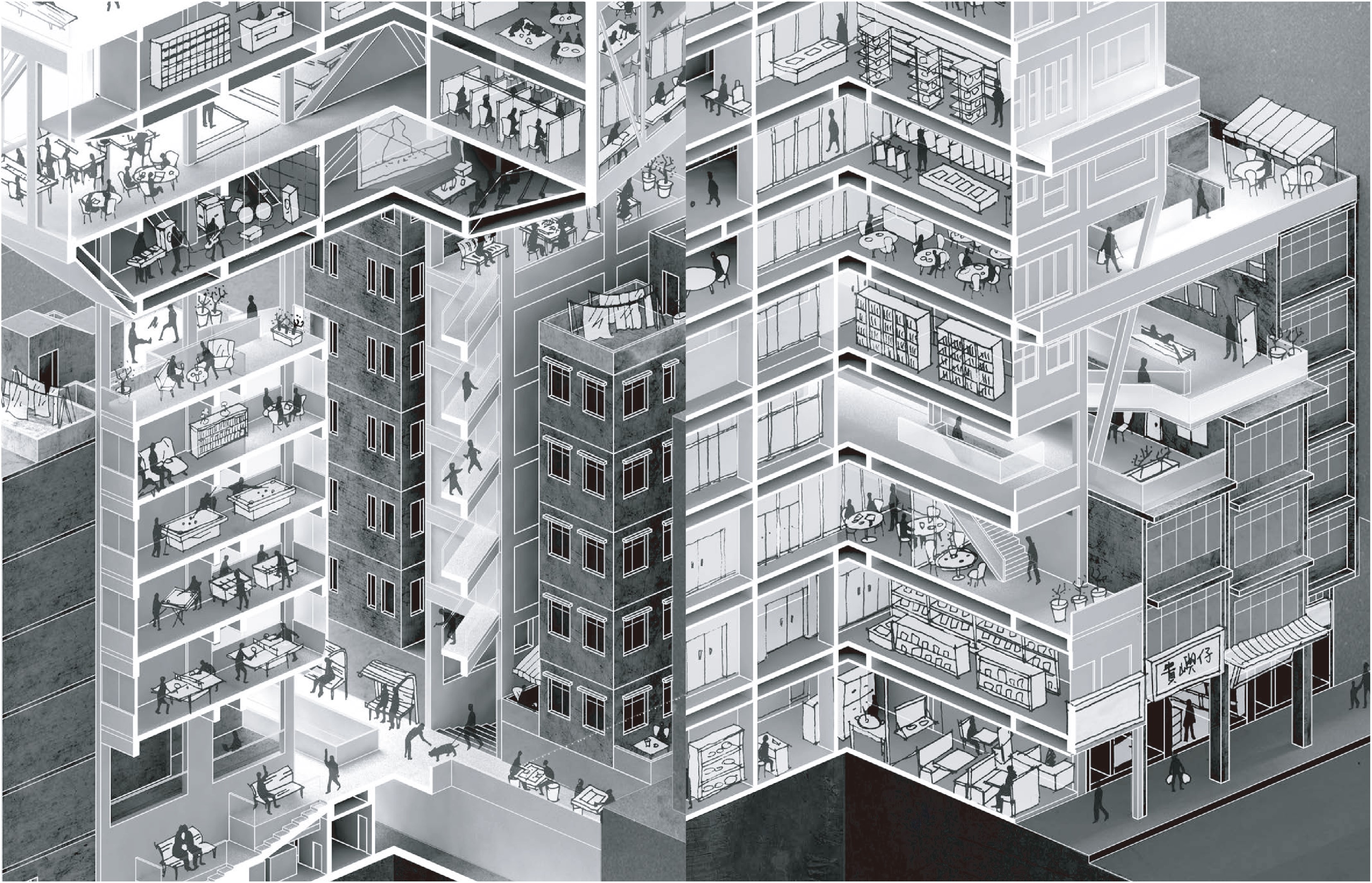

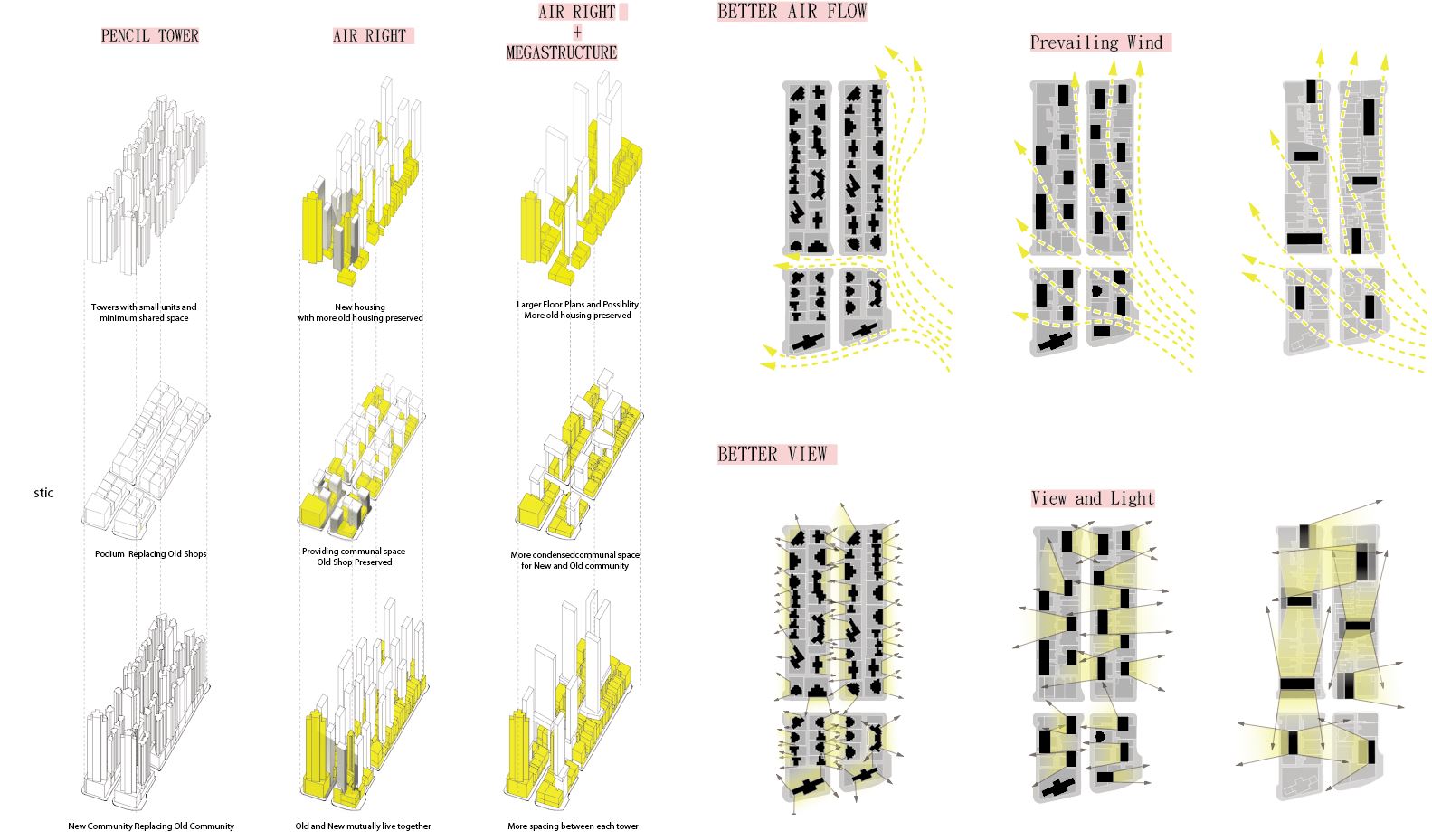
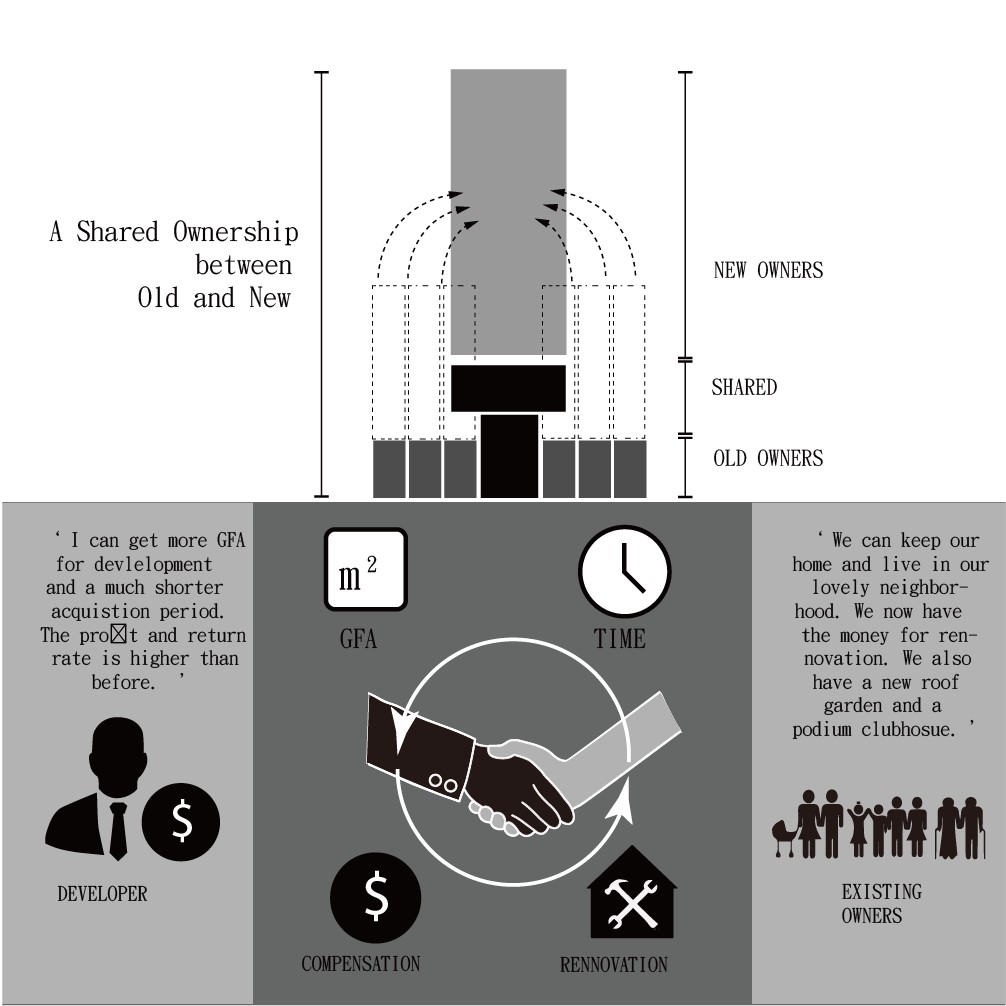
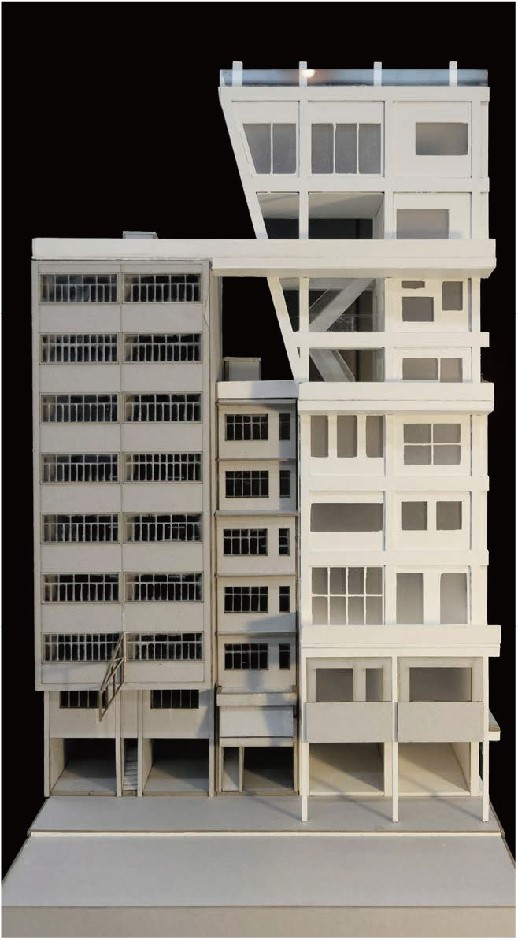
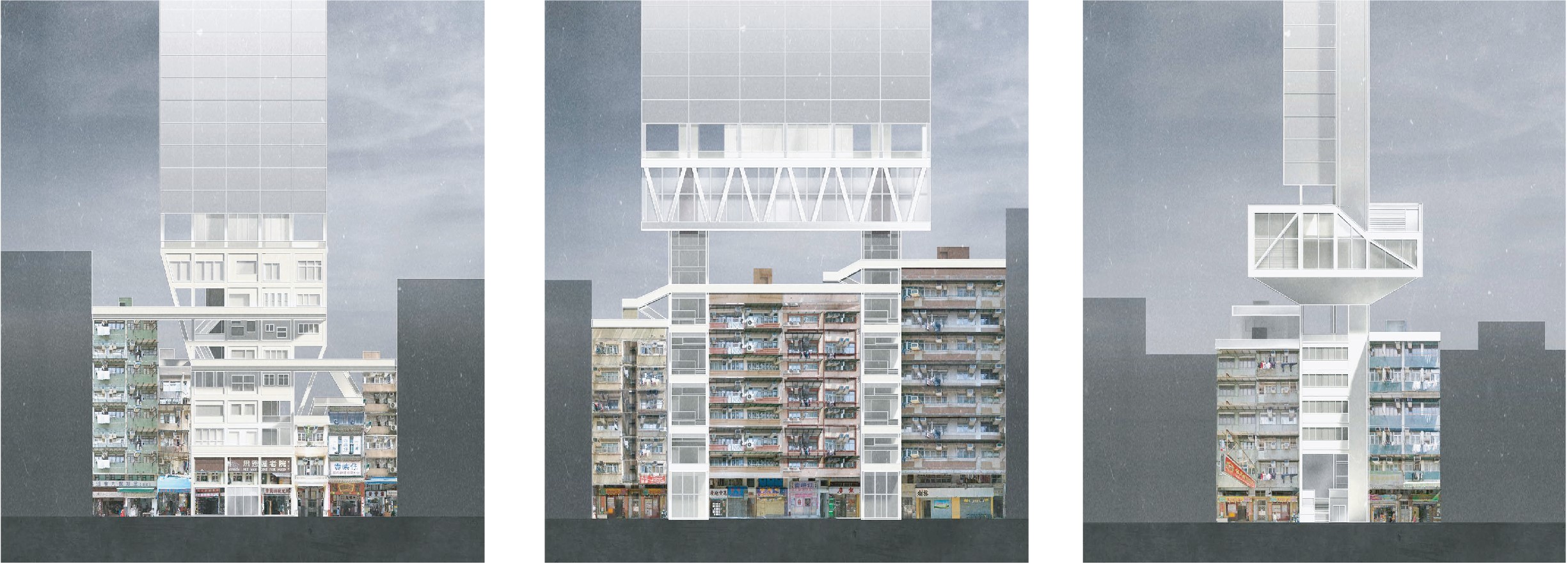
Urban Sybiosis .
香港 / hong kong
陳文德 / Tan Man - Tak , Daren
此論文提出一種新的舊區重建體系以調和在城市發展過程中保育原址以及滿足新的房屋需求之間的衝突。香港舊城的肌理漸漸被’”牙籤樓”所取替。一方面代表着原有的經濟和社交網絡的消失,另一方面顯示了發展商收購土地的阻力與困難。不同於一貫新建設在舊城區所導致的拆除和逼遷, 整個設計以 “土地領空權” 為概念研究一種新的建築原型,以新樓建造作為促進舊區的復修和保育的原動力。通過出售‘土地領空權’給發展商,原址的業主可以保留自己的居所並得到維修舊樓的資金,同時發展商節省了收購的時間和成本. 本設計將新樓與舊樓結合在一起,通過分享業權成為一種新的共有社區,把佔據地面層的裙房提高至空中以減少佔地面積,從而保留下面原有的社區和街道. 共用的”空中裙房”作為新舊的媒介,促進了兩種截然不同的社會階層的互利和共生。
This thesis proposes a new way of redevelopment which can reconcile the tension between old and new in the urban renewal process. The phenomenon of ‘pencil tower’ is becoming more dominant in many old districts in Hong Kong. These slender towers imply not only a complete erasure of the existing economic and social network, but also the difficulties and resistance in acquisition for developers. The concept of ‘air rights’ is deployed to develop a new building prototype, which make use of the pressure for densification as a constructive force to preserve and renovate the old fabric. By selling the Air Right to the developers, the existing residents can keep their home and get the capital for renovation while the developers can reduce cost and time due to acquisition. These old and new buildings together form a new type of development project through a shared ownership. The new prototype alters the typical podium tower configuration by lifting the intermediate space from the ground to be above the old buildings. This shared space acts as an interface between old and new. It provides opportunities for the two different communities to better coexist in a mutually beneficial way.
More Projects of this Session
展區其他作品